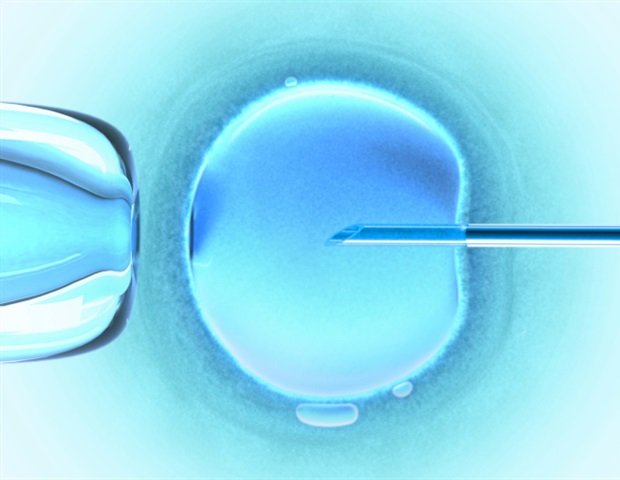New research from Oregon Health & Science University describes the science behind a promising technique for treating infertility by turning a skin cell into an egg capable of producing viable embryos.
Researchers at OHSU have documented in vitro gametogenesis, or IVG, in a mouse model through the preliminary steps of a technique based on transferring the nucleus of a skin cell into a denucleated donated egg. Experimenting on mice, the researchers forced the nucleus of the skin cell to halve its chromosomes so that it could then be fertilized by a sperm cell to create a viable embryo.
The study was published today in the journal Advances in Science.
“The goal is to produce eggs for patients who do not have their own eggs,” said the senior author Shoukhrat Mitalipov, Ph.D., director of the OHSU Center for Embryonic Cell and Gene Therapy.
The technique could be used by women of advanced maternal age or those unable to produce viable eggs due to previous treatment for cancer or other causes. It also increases the likelihood that men in same-sex relationships will have children genetically related to both parents.
Instead of trying to differentiate induced pluripotent stem cells, or iPSCs, into sperm or egg cells, OHSU researchers are focusing on a technique based on somatic cell nuclear transfer, in which a skin cell nucleus is transplanted into a donor egg without its nucleus . In 1996, researchers famously used this technique to clone a sheep in Scotland named Dolly.
In this case, the researchers created a clone of one parent.
In contrast, the OHSU study described the result of a technique that resulted in embryos with chromosomes derived from both parents. The process involves three steps:
- Researchers transplant the nucleus of a mouse skin cell into a mouse egg that has been stripped of its own nucleus.
- Prompted by the cytoplasm -? liquid that fills the cells -; inside the donor egg, the implanted skin cell nucleus discards half of its chromosomes. The process is similar to meiosis, when cells divide to produce mature sperm or egg cells. This is the key step, resulting in a haploid egg with a single set of chromosomes.
- Researchers then fertilize the new egg with sperm, a process called IVF. This creates a diploid embryo with two sets of chromosomes -? which would eventually result in healthy offspring with equal genetic contributions from both parents.
OHSU researchers previously demonstrated proof of concept in a study published in January 2022, but the new study goes further by meticulously sequencing the chromosomes.
The researchers found that the nucleus of the skin cell separates its chromosomes each time it implants in the donor egg. In rare cases, this happened perfectly, with one of each pair of egg and sperm chromosomes matching.
“This paper basically shows how we achieved simplicity,” Mitalipov said. “In the next phase of this research, we will determine how to enhance this pairing so that each pair of chromosomes separates properly.”
Laboratories around the world are involved in a different IVG technique that involves a time-consuming process of reprogramming skin cells to become iPSCs and then differentiating them to become egg or sperm cells.
We skip the whole cell reprogramming step. The advantage of our technique is that it avoids the long culture time needed to reprogram the cell. Within several months, many harmful genetic and epigenetic changes can occur.”
Paula Amato, Professor of Obstetrics and Gynecology, School of Medicine, Oregon Health & Science University
Although researchers are also studying the technique in human eggs and early embryos, Amato said it will be years before the technique is ready for clinical use.
“That gives us a lot of insight,” he said. “But there’s still a lot of work to be done to understand how these chromosomes pair up and divide faithfully to really replicate what happens in nature.”
Source:
Journal Reference:
Mikhalchenko, A., et al. (2024) Induction of somatic cell haploidy by premature cell division. Advances in Science. doi.org/10.1126/sciadv.adk9001.
